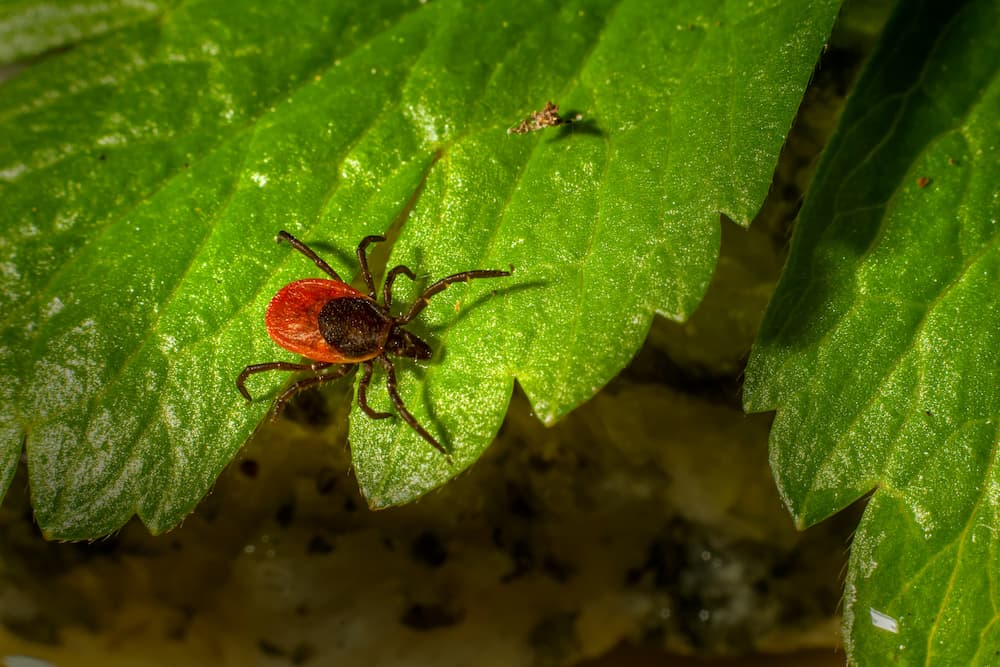
Tick Fever

Our guide has been authored by qualified veterinarians, but should not be taken as substitute for medical advice or professional veterinary consultation. If your pet displays any unusual symptoms, we strongly advise seeking guidance from a veterinarian
Understanding Tick Fever in dogs
Tick Fever is caused by a group of pathogens, including bacteria and other unicellular organisms transmitted to dogs via ticks. They invade the animal’s blood through tick saliva, and attack the red and white blood cells and platelets. This attack can cause severe illness that becomes life-threatening when left untreated.
Tick Fever's Causes: Uncovering Triggers
Several pathogens cause tick fever, and dogs may present with more than one type of infection.
- Ehrlichia species: This common bacterium invades white blood cells and damages platelets, the cell responsible for clotting. In severe cases, this can lead to spontaneous bleeding.
- Anaplasma species: Like Ehrlichia, this bacterium invades platelets, typically causing a milder, more acute form of the disease.
- Babesia species: Unlike the prior two, Babesia Canis is a unicellular parasite or protozoa that invades and destroys red blood cells. Though less common, it causes severe illness.
These pathogens are transmitted by ticks, which can be active year-round in many regions, contrary to common belief. Dogs encounter ticks by walking through open fields, tall grass, and wooded areas. Ticks wait on the edge of plants to jump or drop off and latch onto dogs as they pass by. Their saliva contains a numbing substance, making their bite undetectable to the dog, leaving only a tiny, hidden bite wound. Many owners are surprised to learn that their dog carries this disease because they’ve never found a tick on their pet. Theoretically, it is possible for a contaminated blood transfusion to transmit these diseases, but this is very rare since blood donors are typically screened for this and other pathogens.
 Recognizing Tick Fever: Signs and Symptoms
Recognizing Tick Fever: Signs and Symptoms
- The acute stage: symptoms typical of an infectious disease are noted, such as high fever, fatigue, weakness, decreased appetite, enlarged lymph nodes and spleen, and more. Additional symptoms include conjunctivitis, bruising, mild spontaneous bleeding, and blood in the urine.
- The subclinical stage: During this stage, there’s a balance between the parasite and the dog’s immune system. It may last months without visible symptoms while causing bone marrow and blood cell damage. Diagnosis at this point is based on random blood tests that reveal abnormalities.
- Please note: These two stages are interchangeable, meaning a dog may demonstrate a disease that comes and goes. This is a highly suspicious sign.
- The chronic stage: This advanced stage includes the complete collapse of multiple systems, as well as an autoimmune response. Symptoms include pallor, bruising, nosebleeds, bloody diarrhea, eye damage including blindness, limb edema, limping, and even death. Breeds such as Dobermans and German Shepherds tend to develop more severe disease than others.
The disease has several stages, as seen above, depending on the severity level and the infected dog’s immune system.
 Tick Fever Diagnosis: How it's Identified
Tick Fever Diagnosis: How it's Identified
Early diagnosis starts with an observant owner who notices the symptoms mentioned above. Vets will likely conduct specific blood tests, including a complete blood count, blood smear, serologic antibody, and PCR tests.
 Treating Tick Fever: Options and Approaches
Treating Tick Fever: Options and Approaches
- Antibiotics: Doxycycline is the most common choice for treating bacteria-related forms of tick fever. The treatment typically lasts 3-4 weeks and is highly effective during the early and subclinical stages. Repeat blood counts may be necessary during this period to monitor response.
- Imidocarb Dipropionate: Antibiotics are ineffective against Babesia Canis, so Imidocarb Dipropionate is administered via multiple injections. Side effects may include pain and local inflammatory response.
- Steroids: As the pathogens invade the dog’s blood cells, they can trigger autoimmune responses that cause additional damage. In such cases, steroids are required as part of the treatment to mitigate this response.
- Blood transfusions: While not a standard part of the treatment protocol, blood transfusions can be a life-saving measure in severe cases involving significant red blood cell loss. This is particularly necessary during the chronic stages of the disease when there is extensive bone marrow and blood cell damage.
Tick Fever: Surprising Facts

While humans can get ehrlichiosis, it’s not directly transmittable from dog to human. Certain species affect dogs only, while others can infect humans too. It’s rare for ticks to move from dogs to humans, but humans might encounter ticks while spending time outdoors, just like animals.

Ticks become active and start seeking hosts when the temperature hits 50 degrees. With climate warming over the years, though, they’ve become active nearly year-round in some regions.

Some dogs can become carriers of this disease without showing any symptoms. Even if your dog doesn’t show any symptoms, the disease can be discovered during routine blood screening and may require treatment.
 Vet's Tip: Dealing with Tick Fever
Vet's Tip: Dealing with Tick Fever
Prevention is the best type of treatment. Regular, year-round tick prevention—available in pills, ampules, and collars—can significantly reduce the risk of tick-borne diseases. However, dogs might still get infected, requiring a full body check for ticks after spending time in potentially infested areas like lawns, fields, or wooded areas.




Price Tag

Latest in Research and Treatments
Currently, there’s no vaccine for the tick-borne diseases outlined here, but recent progress in the field shows promise. Researchers are exploring various approaches based on weakened bacteria and proteins like DNA and RNA. We hope these efforts will eventually lead to a long-term solution protecting dogs everywhere.
dogs breeds Prone to Tick Fever
Did you know?
Enrolling in Animalia Pet Insurance
while your pet is healthy is a wise decision.
Waiting until a disease develops means it won't be covered.








